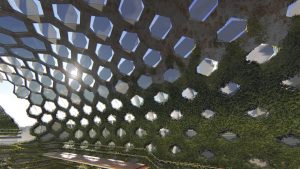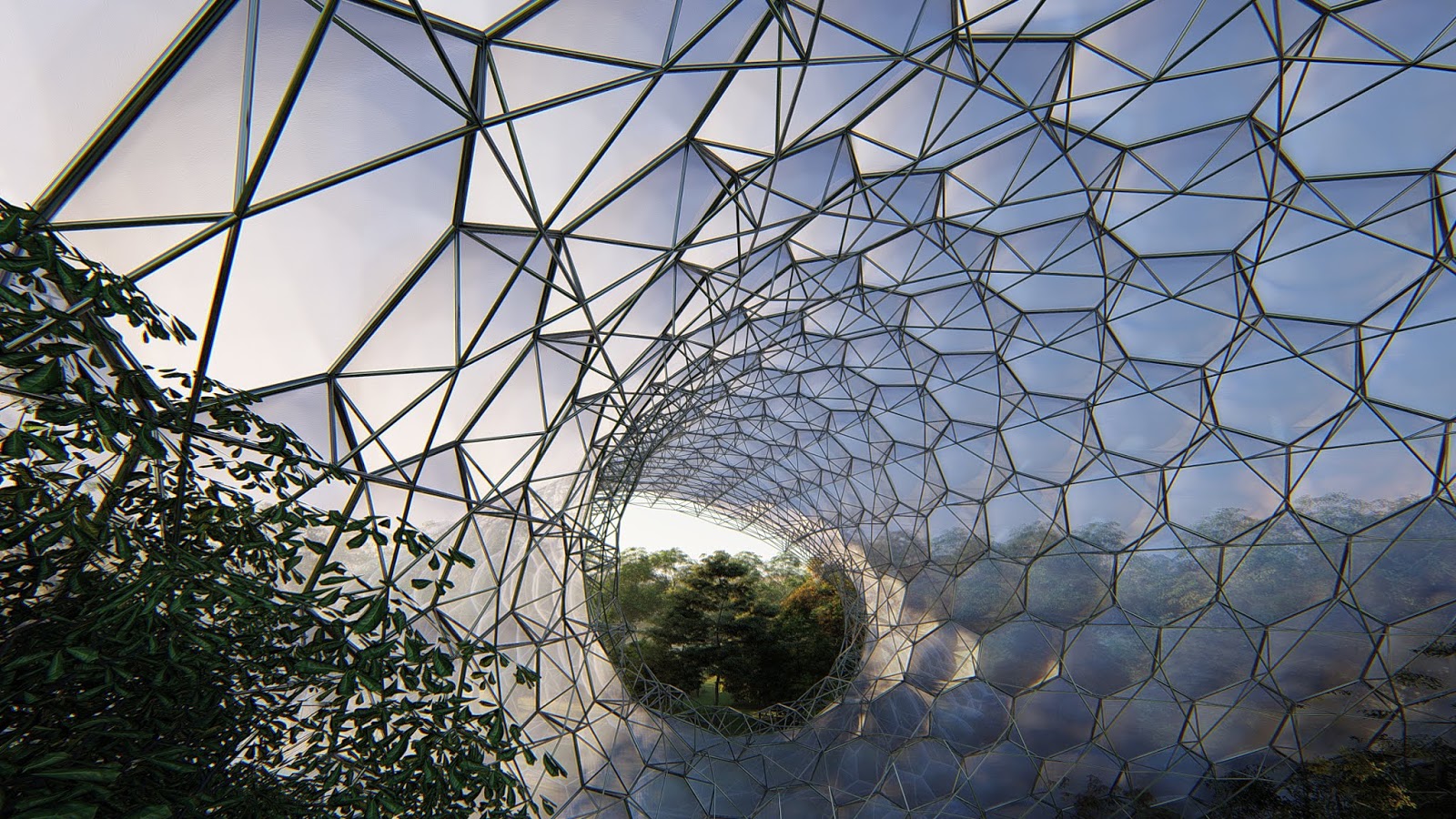Parametric design is slowly becoming an inseparable part of architecture. But property development may need it too. Will smart machines take over the industry? Let’s find out.
Property development can’t go far without architecture. A good property developer can always find a perfect piece of land to develop on. But it would amount to nothing without an architectural touch.
Developers will need someone who can design an ideal structure for that particular plot of land. Only then can the proprietor bring it to life.
However, times are changing and so is the role of an architect. To adapt to modern times, architecture needs to embrace modern tools and computer technology.
Luckily, this is nothing new for architects. After all, their architectural designs and focus have evolved throughout history.
For instance, renaissance architecture emphasised aesthetics. On the other hand, the industrial revolution called for robust and efficient structures. As we can see, architecture always adapts to the zeitgeist.
Today is no different. The emergence of new technologies can reshape the future of architecture. New design concepts have even started to come up with more or less success.
But one technology threatens to become a centrepiece of the future:
Parametric design.
In simple terms, parametric design is a process where you input design “parameters” into a design tool. Those parameters now act as constraints for your potential structure.
The tool processes these parameters and generates the best possible structure using those values. Then, the architect makes adjustments to the structure to explore a myriad of shapes and creative options.
Parametricism is becoming prominent on a large scale all over the world. Architects are utilizing technology to create more and more efficient and magnificent structures.
Computational design principles have the potential to redefine the future of architecture as we know it.

How Will Parametric Design Change Architecture?
There’s no doubt that parametric design is already changing architecture, and this is just the beginning. Here are some of the key changes that parametricism brings to the table.
#1 – It Combines Aesthetics with Efficiency
For a long time, the laws of nature limited the architect’s imagination. Over the centuries, a number of artists managed to go against the grain, but it was never possible on a large scale of any sort.
It simply used up so much time to turn a visually captivating building into an efficient structure. It took a lot of trial and error, time, and effort of many. Such an endeavour was almost impossible in the past with these limitations.
However, computers have allowed architects to quickly solve their design problems. Check out any modern parametric structure. You’ll notice it doesn’t follow any concepts of symmetry and it defies traditional shapes.
In the future, parametricism can solve spatial issues better than any engineer or architect. At the same time, architects can add their visual touch by tweaking the design tool.
Therefore, the end product can be a blend of maximum efficiency and artistic touch.
#2 – It Accelerates Design Ideas
When you input particular parameters into the design tool, it will abide by these rules in coming up with possible designs. This allows you to find the best possible solution for every corner of your potential structure
Thus, there’s so much more in parametricism than just twisting your structure for the sake of it. You can input the parameters inside the model of the structure and quickly sort out every room.
For example, you can design a restroom in accordance with the structure’s shape. Input parameters into the program and you’ll get multiple design ideas. If you manage to sort that out quickly, you can move on to the more appealing aspects of the design.
#3 – You Shouldn’t Confuse It with “Style”
You’ve noticed the word “parametricism” being thrown out here. It’s a term that describes an architectural style that uses parametric technology.
And you may indeed notice obvious similarities in parametric structures. It’s mostly because of their uncanny design, which seems out of place compared to its surroundings.
But that’s just one part of the story.
For example, property developers around the world are starting to embrace parametric tools, too. Not because they want to develop unusual structures, but because it allows them to utilize space.
Parametric tools can become a staple of property investment. By utilizing every centimetre of your investment, you can turn a mediocre piece of land into a beautiful, efficient structure and development.
That’s why it’s not only an artistic “trend” but also a technological step forward.
#4 – Allows a Complex Design Process (No More Repetition)
With most parametric tools being cloud-based, it’s easy to transfer data from one user to another. This provides an easier exchange of data and allows the formation of multiple design teams.
This affects the entire design process in multiple ways. Most notably, with the invention and rise to prominence of Building Information Modeling (BIM).
As you know, the Australian government is an early champion of BIM. It is a system where multiple teams work together in creating a building or other structure. It consists of multiple levels, from programming to construction and operation.
This process has the potential to end repetitive tasks and move away from traditional tools. It allows you to automate countless tasks that you would otherwise spend a lot of time on.
But on the other hand, designers will need to adapt to various new potential tasks.
#5 – Utilizes a Ton of Data in an Instant
The possibilities of parametric architecture are limitless. What previously took weeks, months, or years before now only takes a few minutes.
Imagine you need to design an office building.
First, you need to think of the client’s requests as well as the possibilities. Then, you need to take into account natural laws that may prevent a particular design. Or laws affecting the durability of the building, including materials and other elements.
But with an AI system, you just need to know the initial parameters. The computer will do everything for you on its own.
Many say that these tools are the architect’s programming language. By playing with particular parameters and adding data, they come up with shapes and forms that weren’t possible before.
Within seconds, you can create countless different outputs using previous and new data.
Not to mention you can make new tools to suit your needs.
For example, you’re building a tower in a city where it’s mostly cloudy. How would you test the amount of daylight at a particular time of the year?
With these tools, you can do it in minutes. Simply simulate the situation with the appropriate parameters and you’ll get your answer.
#6 – Architecture Will Adapt to “Smart Cities”
A lot of experts are afraid that AI will gradually take over architecture jobs. Although that’s a viable concern, there may be a different path for an architect.
Instead of focusing on a certain structure or neighbourhood, a team of architects may have to plan entire cities. With the evolution of technology, entire cities are becoming individual systems of their own.
Parametric architecture may play a crucial role in making these smart cities work. This will present architects with another task. They may need to plan out the entire system of structures, instead of one at a time.
In a way, this is already happening. For instance, Alphabet (Google’s parent company) is looking to turn a Toronto district into a smart micro-city.
What’s Next for Architecture?
The fears of AI taking over an entire industry are premature. However, there’s no doubt that it is increasingly more common in architecture.
It’s up to the architects to embrace the new technologies and adapt to modern times. In a way, parametric technology allows them to focus on the things that matter.
If they utilize all available tools, they will have a platform with which to further evolve. Whatever the future brings, it’s going to be exciting to be a part of.
And what about you? Are you ready to welcome parametric design with open arms?
If you want to be part of the future, you should try Archistar. The platform contains everything that you need to get ready for the future.
Our parametric design generator uses AI to create a ton of potential designs. Use the 3D modeling engine to create your own parametric models. Utilize every centimetre of your development property and maximize its value.
If you like what you’re hearing, Get started for free: [https://www.archistar.ai/] and take property development to a new level.


